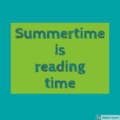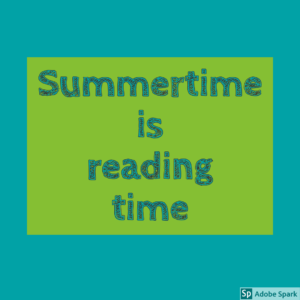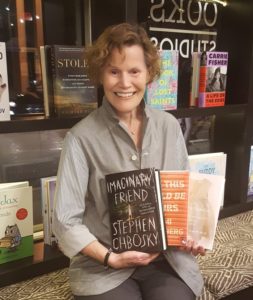 Dear Friends,
Dear Friends,
George and I are thrilled to be back at the store. And doubly thrilled that George is feeling great and coming up with new ideas every day. We’ve already moved Mind, Body, Spirit to its own section, expanded biography, history and science, and given cookbooks a bright new space.
We can’t thank our staff enough for keeping the store going last season. Emily, Robin, Lori, Gia and Camila — you deserve medals. We’re hoping to add a new bookseller this season. More about that next time. Welcome back to our loyal volunteers, Michael, Erika, Shelli, Karen, Anna, and Carey. Looking forward to seeing the rest of you as you return to town.
To kick off our season I’m excited to tell you we have three Stars coming to Books & Books in the next few weeks, two of them directly from the Miami Book Fair. Each one a special friend of Key West and our store.
Wednesday, November 20th at 6pm Dani Shapiro will talk about and sign her latest best seller, Inheritance, a book I could not, would not put down until I’d finished. Imagine, you sign up for one of those ancestor websites for fun, spitting in that little vial until you’re sure you’ve no spit left. You expect to maybe find out you’ve got a long lost distant cousin somewhere in the world. Instead you’re hit over the head with shocking news. I’ll let Dani tell you the rest. She’s a dynamic writer and speaker. You don’t want to miss this chance to meet Dani, hear her story, and have her sign your book.
Monday, November 25th at 6pm Stephen Chbosky (Cha-bosky) will tell us about his new novel, Imaginary Friend. You know his book Perks of Being a Wallflower and I hope you’ve seen the movie based on that novel, adapted and directed by Stephen. It played at the Tropic Cinema and when it did I saw it four times. Yes, four! Each time I found something new in it. Stephen went on to adapt and direct the film Wonder with Julia Roberts. And now, he’s written a novel published for adults — an entertaining thriller, scary like the best stories of another Stephen, whose last name starts with a K. Great characters, haunting, unique. Bring the teens to meet Stephen. They’ll love him. So will you. He and I met over a book banning case in Chicago — where a group of teens were defending Perks of Being a Wallflower. I’m sure he’ll tell us about that and more. I’m betting there will be a movie of Imaginary Friend and that Stephen will be adapting and directing. Read the book first.
Friday, December 6th at 6pm we’ll welcome Jami Attenberg back to Books & Books with her new bestseller All This Could Be Yours, one of her best books yet. Jami delighted us 2 years ago. If you were there you’ll remember. If not, you’ll find out why we love her. I gobbled up this novel then went back to the beginning and started again to try to figure out how she does it. How does she create characters who are so real you embrace them (when sometimes you don’t like what they’re doing on the page)? She’ll answer that question and more. She’s a great reader and very funny. Book Clubs are already choosing All This Could Be Yours for their next pick. Jami gives us plenty to talk about and even more to think about on our own. She promised on this tour she’d bring her dog Sid, famous on Twitter. Alas, Sid is at home in New Orleans with a great new sitter awaiting Jami’s return. Thank you for coming back, Jami! We can’t wait to see you.
Please help us welcome all three of these best-selling authors. See you at the store.
Love,

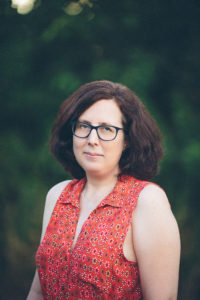 For a reading and signing, Tuesday, Dec. 10 at 6pm, Pushcart Prize–winning author and former Studios of Key West artist in residence Ayse Papatya Bucak returns to the island with her debut story collection THE TROJAN WAR MUSEUM.
For a reading and signing, Tuesday, Dec. 10 at 6pm, Pushcart Prize–winning author and former Studios of Key West artist in residence Ayse Papatya Bucak returns to the island with her debut story collection THE TROJAN WAR MUSEUM.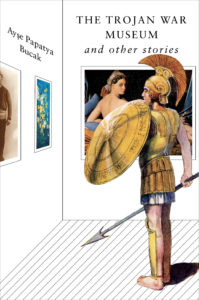 In Bucak’s dreamlike narratives, showcasing spectacular imaginative range and lyricism, dead girls recount the effects of an earthquake and a chess-playing automaton falls in love. A student stops eating and no one knows whether her act is personal or political. A Turkish wrestler, a hero in the East, is seen as a brute in the West. The anguish of an Armenian refugee is “performed” at an American fund-raiser. An Ottoman ambassador in Paris amasses a tantalizing collection of erotic art. And in the masterful title story, the Greek god Apollo confronts his personal history and bewails his Homeric reputation as he tries to memorialize, and make sense of, generations of war.
In Bucak’s dreamlike narratives, showcasing spectacular imaginative range and lyricism, dead girls recount the effects of an earthquake and a chess-playing automaton falls in love. A student stops eating and no one knows whether her act is personal or political. A Turkish wrestler, a hero in the East, is seen as a brute in the West. The anguish of an Armenian refugee is “performed” at an American fund-raiser. An Ottoman ambassador in Paris amasses a tantalizing collection of erotic art. And in the masterful title story, the Greek god Apollo confronts his personal history and bewails his Homeric reputation as he tries to memorialize, and make sense of, generations of war.

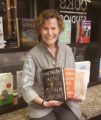
 Dear Friends,
Dear Friends,
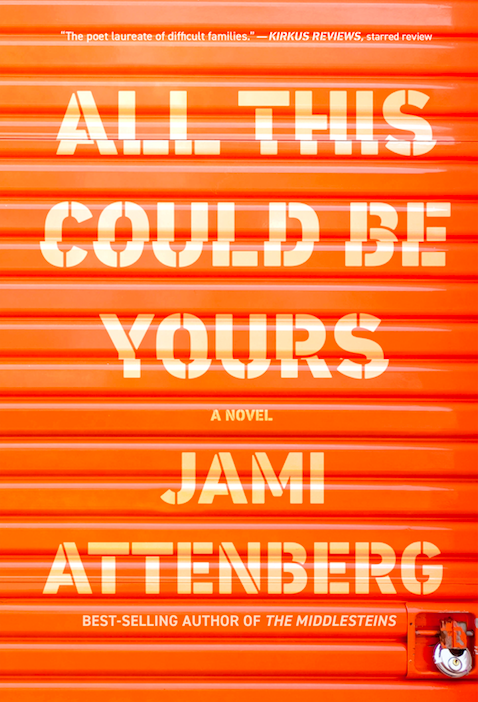
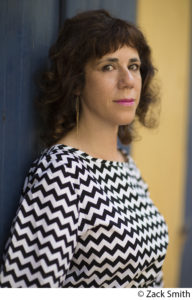 Jami Attenberg returns to Books and Books Friday, Dec. 6 at 6pm for a reading and signing of her new novel
Jami Attenberg returns to Books and Books Friday, Dec. 6 at 6pm for a reading and signing of her new novel  ALL THIS COULD BE YOURS is a timely, piercing exploration of what it means to be
ALL THIS COULD BE YOURS is a timely, piercing exploration of what it means to be 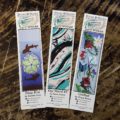
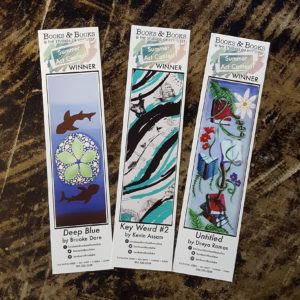 Update: The limited edition bookmarks featuring the winners of the Summer Art Contest are now available in store, free with purchase. Come and get them while they last!
Update: The limited edition bookmarks featuring the winners of the Summer Art Contest are now available in store, free with purchase. Come and get them while they last!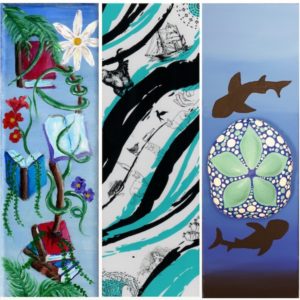
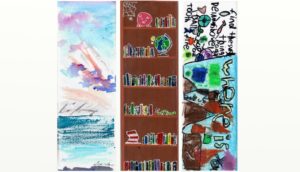
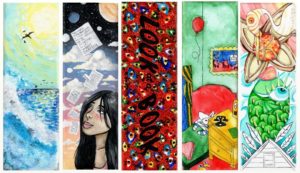
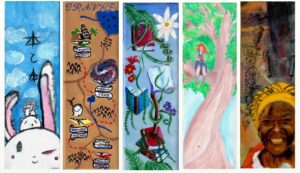
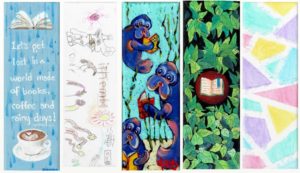
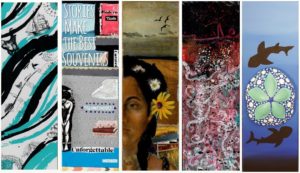

 Lori’s pick for this month:
Lori’s pick for this month:  bookshelf and enjoy it again sometime.
bookshelf and enjoy it again sometime.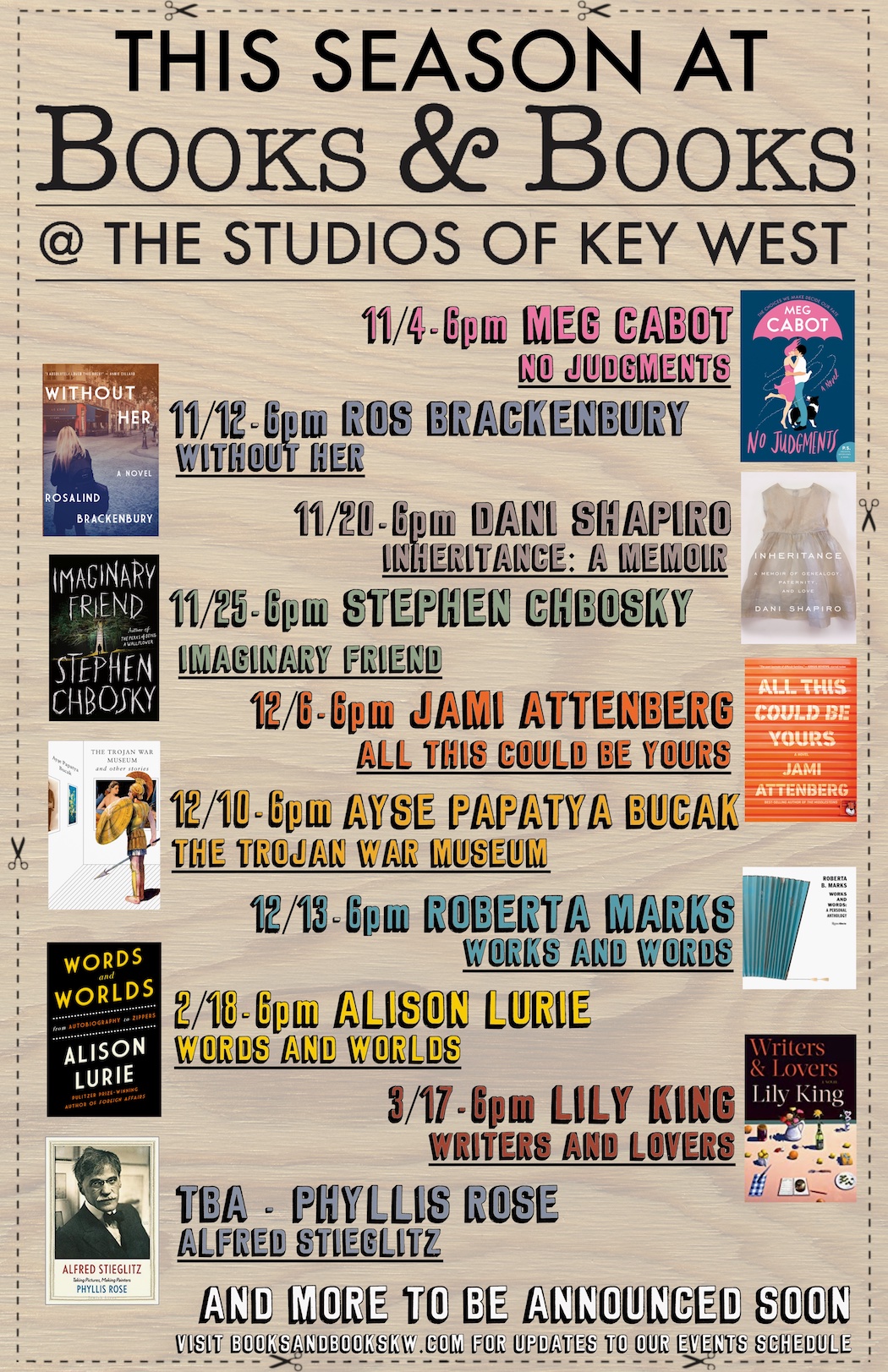
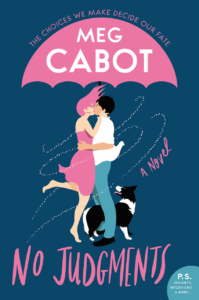 We kick-off the season with Meg Cabot on Monday, November 4th at 6pm. She will be here to discuss her latest title,
We kick-off the season with Meg Cabot on Monday, November 4th at 6pm. She will be here to discuss her latest title,  Rosalind “Roz” Brackenbury will be here to discuss her new novel,
Rosalind “Roz” Brackenbury will be here to discuss her new novel,  Dani Shapiro will join us on November 20th at 6pm. We will discuss her latest release, Inheritance:
Dani Shapiro will join us on November 20th at 6pm. We will discuss her latest release, Inheritance:  Jami Attenberg has a new release coming out on October 22nd. We welcome her to discuss her new novel,
Jami Attenberg has a new release coming out on October 22nd. We welcome her to discuss her new novel, 
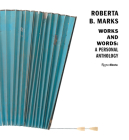




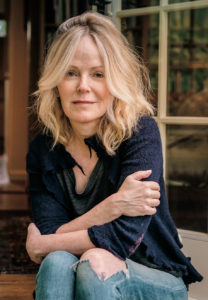


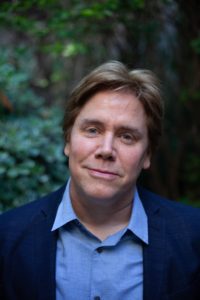
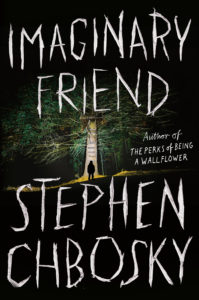 Q: How did you come to write Imaginary Friend?
Q: How did you come to write Imaginary Friend?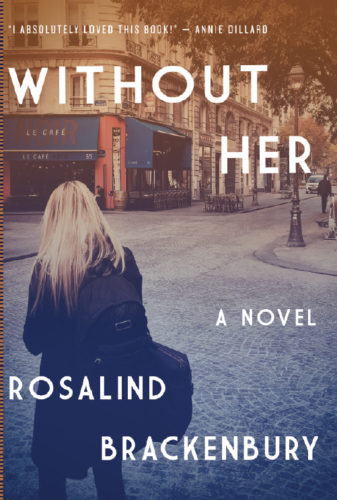
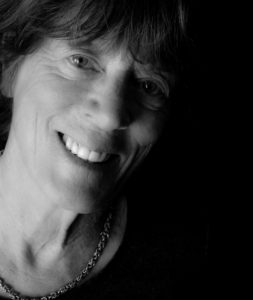 Tuesday, November 12, at 6pm, Rosalind Brackenbury will be in store for a reading and book signing featuring her new novel, WITHOUT HER.
Tuesday, November 12, at 6pm, Rosalind Brackenbury will be in store for a reading and book signing featuring her new novel, WITHOUT HER.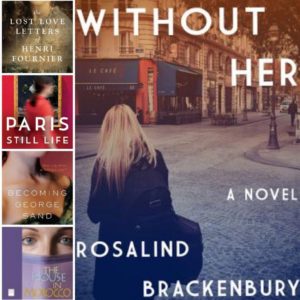 Always a local fan favorite, Brackenbury is the author of BECOMING GEORGE SAND, PARIS STILL LIFE, THE THIRD SWIMMER, THE LOST LOVE LETTERS OF HENRI FOURNIER and other titles. A former writer-in-residence at the College of William and Mary in Williamsburg, Virginia, she has also served as poet laureate of Key West.
Always a local fan favorite, Brackenbury is the author of BECOMING GEORGE SAND, PARIS STILL LIFE, THE THIRD SWIMMER, THE LOST LOVE LETTERS OF HENRI FOURNIER and other titles. A former writer-in-residence at the College of William and Mary in Williamsburg, Virginia, she has also served as poet laureate of Key West.